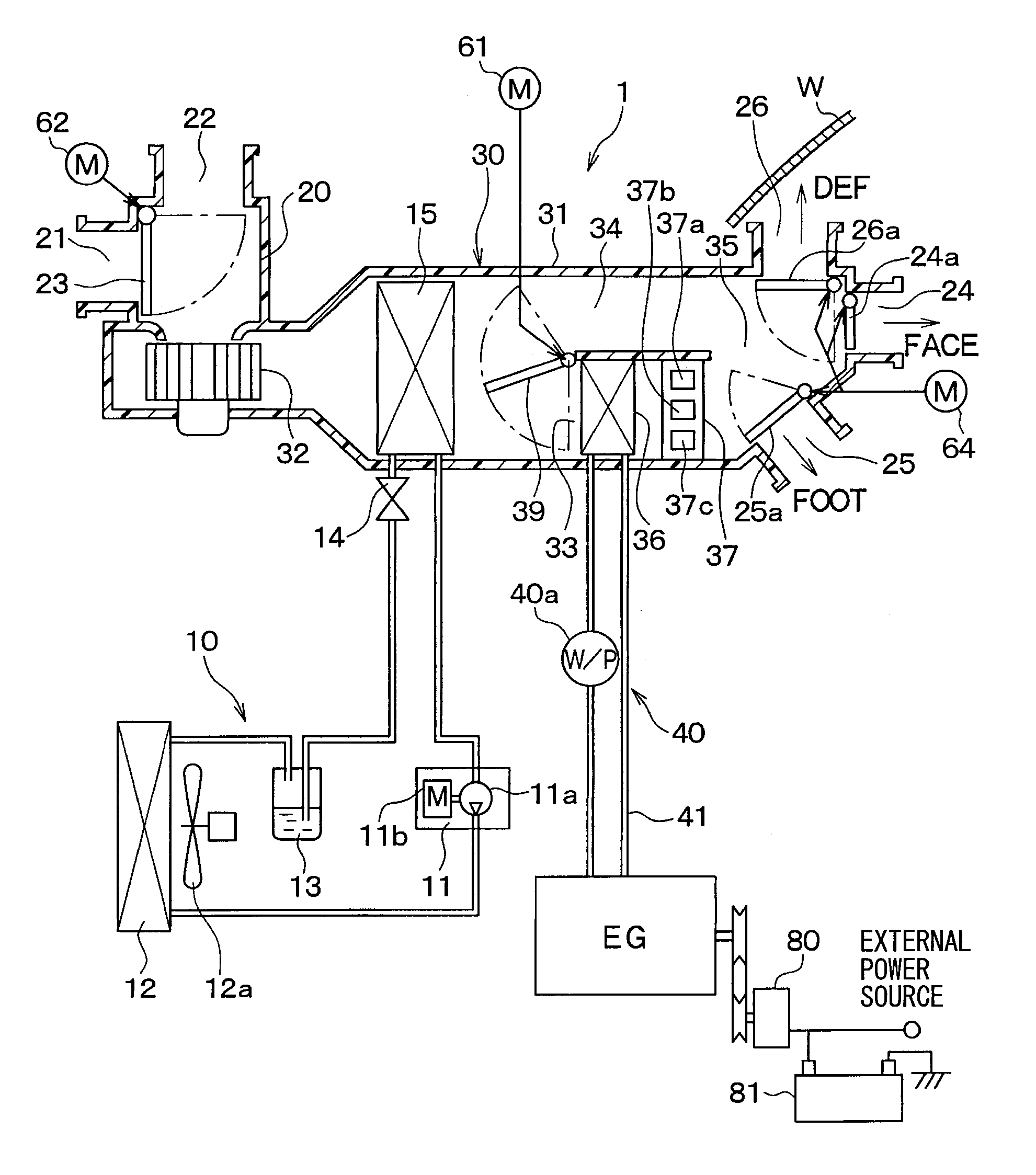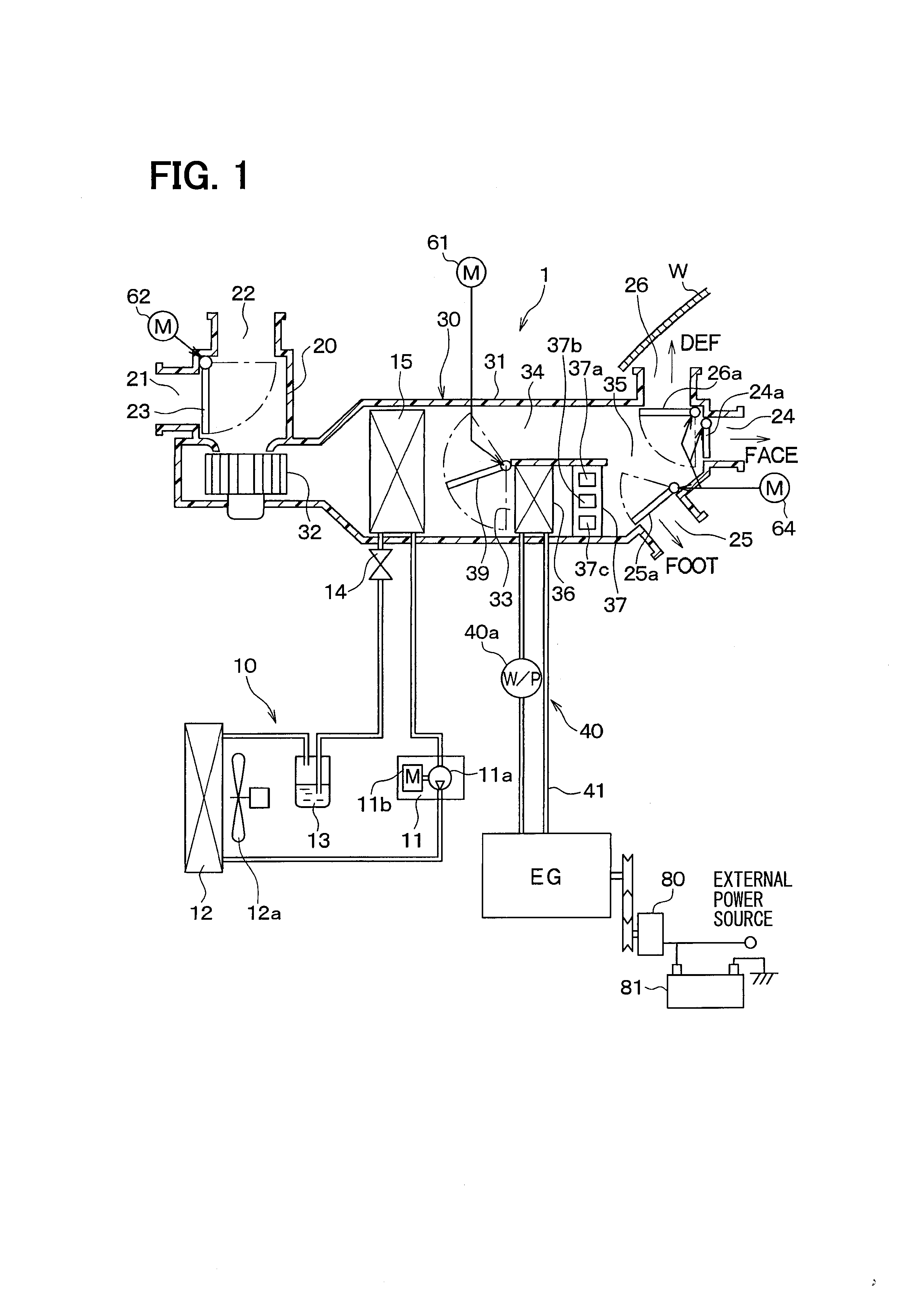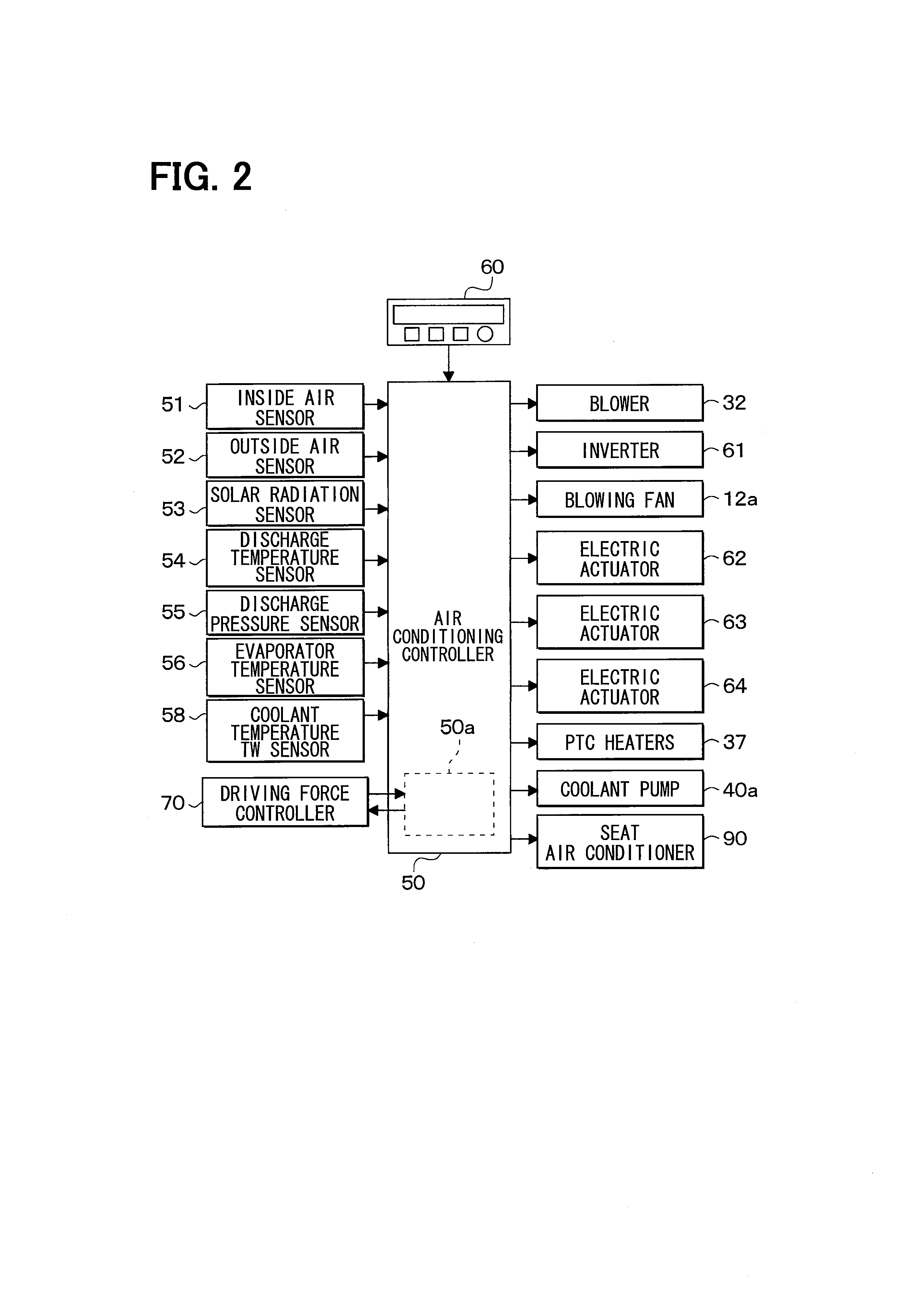Vehicle air conditioner
a technology for air conditioners and vehicles, applied in the direction of machines/engines, engine starters, transportation and packaging, etc., can solve the problem of not increasing the temperature of coolant to a sufficient temperature for heating sources, and achieve the effect of reducing the driving force ratio, reducing the outside air temperature, and sufficient warming of the vehicle interior
- Summary
- Abstract
- Description
- Claims
- Application Information
AI Technical Summary
Benefits of technology
Problems solved by technology
Method used
Image
Examples
first embodiment
[0046]A first embodiment of the present invention will be described below with reference to FIGS. 1 to 9. FIG. 1 shows an entire configuration diagram of a vehicle air conditioner 1 in this embodiment. FIG. 2 shows a block diagram of an electric controller of the vehicle air conditioner 1. In this embodiment, the vehicle air conditioner 1 is applied to a hybrid vehicle that obtains the driving force from an internal combustion engine (engine) EG and an electric motor for traveling.
[0047]The hybrid vehicle in this embodiment is comprised of a plug-in hybrid vehicle that can charge a battery 81 with electric power supplied from an external power supply (commercial power supply) while the vehicle is stopping.
[0048]The plug-in hybrid vehicle charges the battery 81 with the power from the external power supply while the vehicle is stopping before start-up of the vehicle. When the remaining storage level SOC of the battery 81 is equal to or more than the predetermined reference remaining ...
second embodiment
[0182]In the first embodiment, in order to increase the coolant temperature Tw up to the sufficient level for the heat source for heating, the requested number of revolutions of the engine EG is increased to thereby decrease the driving force ratio (motor-side driving force / internal combustion engine-side driving force), by way of example. In this embodiment, however, the control form in step S11 of the first embodiment is changed to thereby decrease the motor-side driving force, which results in a decrease in driving force ratio, by way of example.
[0183]Specifically, as shown in FIGS. 10 and 11, the control flow following the process in step S1103 of FIG. 6 is changed. In any one of steps S1104 to S1110 of FIG. 10, first, like the first embodiment, it is determined whether or not the blower 32 is operating, whether or not the economy switch is turned on, whether or not the outside air temperature Tam is lower than the predetermined reference outside air temperature, whether or not ...
third embodiment
[0197]This embodiment changes the control of the process in step S11 of the first embodiment. In this embodiment, even when the EV operation mode is selected as the operation mode described in the table of FIG. 9 of the first embodiment, switching of the operation mode into the HV operation mode whose driving force ratio is smaller will increase the coolant temperature Tw up to the sufficient level for the heat source for heating, by way of example.
[0198]Specifically, as shown in FIG. 12, a control flow following step S1103 in FIG. 6 is changed. First, in any one of steps S1104 to S1109 of FIG. 12, it is determined whether the blower 32 is operating or not, whether or not the economy switch is turned on, whether or not the outside air temperature Tam is lower than the predetermined reference outside air temperature, whether or not the air mix door 39 is located in the maximum heating position, whether or not the target temperature Tset is higher than the predetermined reference targ...
PUM
 Login to View More
Login to View More Abstract
Description
Claims
Application Information
 Login to View More
Login to View More - R&D
- Intellectual Property
- Life Sciences
- Materials
- Tech Scout
- Unparalleled Data Quality
- Higher Quality Content
- 60% Fewer Hallucinations
Browse by: Latest US Patents, China's latest patents, Technical Efficacy Thesaurus, Application Domain, Technology Topic, Popular Technical Reports.
© 2025 PatSnap. All rights reserved.Legal|Privacy policy|Modern Slavery Act Transparency Statement|Sitemap|About US| Contact US: help@patsnap.com



